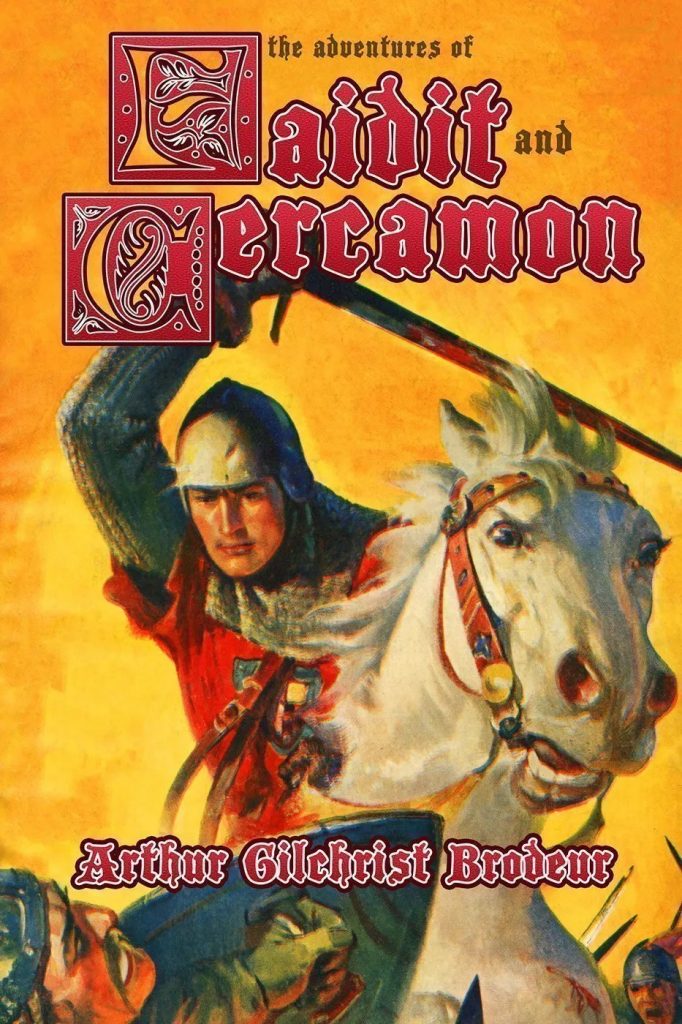 Medieval France was not a nation but rather an ethno-geographic area. The Capetian kings ruled the Isle de France with little power over quasi-independent counties and duchies. Toulouse, Aquitaine, Brittany, Normandy, Anjou, Burgundy all fought and schemed for dominance.
Medieval France was not a nation but rather an ethno-geographic area. The Capetian kings ruled the Isle de France with little power over quasi-independent counties and duchies. Toulouse, Aquitaine, Brittany, Normandy, Anjou, Burgundy all fought and schemed for dominance.
This is the milieu of 12th Century France and Arthur Gilchrist Brodeur’s adventures of Pierre Faidit de l’Espee. Brodeur (1888-1971) was a professor of English and Germanic Philology at Berkeley, University of California. He wrote The Art of Beowulf that J. R. R. Tolkien admired.
Brodeur was also a writer of historical fiction for pulp magazines, mainly Adventure, from 1916-1929. About half of his fiction was co-written with Farnham Bishop. Many of his stories had a Norse setting during the Viking Age.
Starting in 1921, Brodeur had two series set in mid-12th Century France. The first was that of Pierre Faidit of the Sword.
| Story Title | Issue of Adventure |
| Fisherman’s Luck | Nov. 10, 1921 |
| Before Midnight | Dec. 10, 1921 |
| The Sword of the Prophet | Jan. 10, 1922 |
| Faithful | Feb. 10, 1922 |
| Red Night | Mar. 10, 1922 |
| For the Crown | May. 10, 1922 |
| Brothers in Arms | Dec. 30, 1925 |
“Fisherman’s Luck” (starts 1133 A.D) has Count Alphonse-Jourdain the Magnificent of Toulouse discovering the young fisherman Pierre Faidit and attaching to his retinue. Later in the story, Pierre saves Toulouse from an assault by Aquitaine.
“Before Midnight” (1145 A.D) has Count Alphonse sending Pierre with a small group to retake a small castle from a rogue before the forces of Barcelona can take it. Cercamon the troubadour swordsman, in the service of Count Raymond-Berenger of Barcelona is introduced in this story.
“The Sword of the Prophet (1146 A.D.) starts with an assassination attempt on Count Alphonse. Pierre travels to Cordoba in Moslem Spain with Cercamon to unravel a conspiracy.
“Faithful” (1147 A.D.) takes place in the city of Antioch in Syria during events of the Second Crusade. King Louis VII entrusts Pierre to keep his Queen, Alienor of Aquitaine from scheming.
“Red Night” (1150 A.D.): Count Alphonse-Jourdain is dead. Pierre of the Sword travels to Normandy meeting Duke Henry II and taking service with him. Pierre must clean out a nest of troublesome bandits.
“For the Crown” (1151 A.D.): Pierre and Thomas Becket travel to England to shore up support for Duke Henry of Normandy when he plans to take the crown from King Stephen of Blois. There is skullduggery afoot and an assault on a castle.
“Brothers in Arms” (1152 A.D.): Norman nobles are jealous of Pierre’s standing with Duke Henry. Pierre kills one Norman noble who attempts to knife him in the dark. Duke Henry sends Pierre south to Chinon to lie low. There is scheming by the Normans and Pierre is thrown in the dungeon in Chinon. His worst enemy, the recently divorced Alienor of Aquitaine is in Chinon and plans to hang Pierre. Cercamon, now in the service also of Duke Henry thinks something is amiss and looks for Pierre.
All these stories have been collected by Altus Press. I like Brodeur, I even have his translation of The Prose Edda. I always warn people when reading historical fiction from Adventure, don’t expect Robert E. Howard levels of violence. Harold Lamb, Brodeur, Arthur D. Howden Smith, Talbot Mundy – the fiction is more leisurely with a big emphasis on quick thinking and cleverness on the part of the main character. The next generation of writers including Howard, F. van Wyck Mason, and Malcolm Wheeler Nicholson would increase the action scenes. Brodeur knew this period. Also, his 12th Century France is similar to Robert E. Howard’s Aquilonia which is a fantasticated Angevin Empire. A young Robert E. Howard was reading Arthur Gilchrist Brodeur in the pages of Adventure in the 1920s. Howard’s Poitain in southern Aquilonia is straight out of Brodeur’s tales of Pierre Faidit.
I’ve seen Brodeur’s name in a number of places but I can’t remember reading any of his work. Thanks for the recommendation!